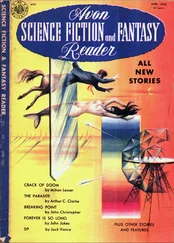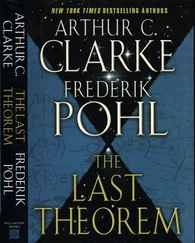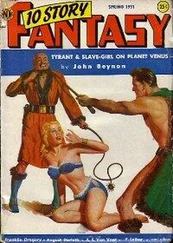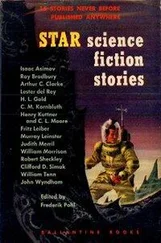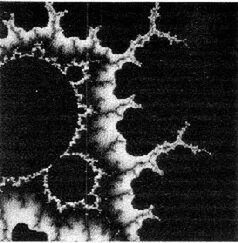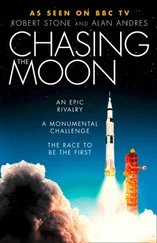Arthur Clarke - 3001 - The Final Odyssey
Здесь есть возможность читать онлайн «Arthur Clarke - 3001 - The Final Odyssey» весь текст электронной книги совершенно бесплатно (целиком полную версию без сокращений). В некоторых случаях можно слушать аудио, скачать через торрент в формате fb2 и присутствует краткое содержание. Жанр: Фантастика и фэнтези, на английском языке. Описание произведения, (предисловие) а так же отзывы посетителей доступны на портале библиотеки ЛибКат.
- Название:3001: The Final Odyssey
- Автор:
- Жанр:
- Год:неизвестен
- ISBN:нет данных
- Рейтинг книги:4 / 5. Голосов: 1
-
Избранное:Добавить в избранное
- Отзывы:
-
Ваша оценка:
- 80
- 1
- 2
- 3
- 4
- 5
3001: The Final Odyssey: краткое содержание, описание и аннотация
Предлагаем к чтению аннотацию, описание, краткое содержание или предисловие (зависит от того, что написал сам автор книги «3001: The Final Odyssey»). Если вы не нашли необходимую информацию о книге — напишите в комментариях, мы постараемся отыскать её.
3001: The Final Odyssey — читать онлайн бесплатно полную книгу (весь текст) целиком
Ниже представлен текст книги, разбитый по страницам. Система сохранения места последней прочитанной страницы, позволяет с удобством читать онлайн бесплатно книгу «3001: The Final Odyssey», без необходимости каждый раз заново искать на чём Вы остановились. Поставьте закладку, и сможете в любой момент перейти на страницу, на которой закончили чтение.
Интервал:
Закладка:
Rueful gratitude to my Del Rey Books editor, Shelly Shapiro, for ten pages of niggles which, when dealt with, made a vast improvement to the final product. (Yes, I've been an editor myself, and do not suffer from the usual author's conviction that the members of this trade are frustrated butchers.)
Finally, and most important of all: my deepest thanks to my old friend Cyril Gardiner, Chairman of the Galle Face Hotel, for the hospitality of his magnificent (and enormous) personal suite while I was writing this book: he gave me a Tranquillity Base in a time of troubles. I hasten to add that, even though it may not provide such extensive imaginary landscapes, the facilities of the Galle Face are far superior to those offered by the 'Grannymede', and never in my life have I worked in more comfortable surroundings.
Or, for that matter, in more inspirational ones, for a large plaque at the entrance lists more than a hundred of the Heads of State and other distinguished visitors who have been entertained here. They include Yuri Gagarin, the crew of Apollo 12 – the second mission to the Moon's surface – and a fine collection of stage and movie stars: Gregory Peck, Alec Guinness, Noel Coward, Carrie Fisher of "Star Wars" fame... As well as Vivien Leigh and Laurence Olivier – both of whom make brief appearances in "2061 Odyssey Three" (Chapter 37). I am honoured to see my name listed among them.
It seems appropriate that a project begun in one famous hotel – New York's Chelsea, that hotbed of genuine and imitation genius – should be concluded in another, half a world away. But it's strange to hear the monsoon-lashed Indian Ocean roaring just a few yards outside my window, instead of the traffic along far-off and fondly remembered 23rd Street.
IN MEM0RIAM: 18 SEPTEMBER 1996
It was with the deepest regret that I heard – literally while editing this acknowledgements – that Cyril Gardiner died a few hours ago. It is some consolation to know that he had already seen the above tribute and was delighted with it.
VALEDICTION
'Never explain, never apologize' may be excellent advice for politicians, Hollywood moguls and business tycoons, but an author should treat his readers with more consideration. So, though I have no intention of apologizing for anything, perhaps the complicated genesis of the Odyssey Quartet requires a little explaining.
It all began at Christmas 1948 – yes, 1948! – with a 4,000-word short story which I wrote for a contest sponsored by the British Broadcasting Corporation. 'The Sentinel' described the discovery of a small pyramid on the Moon, set there by some alien civilization to await the emergence of mankind as a planet-faring species. Until then, it was implied, we would be too primitive to be of any interest. [ 3] The BBC rejected my modest effort, and it was not published until almost three years later in the one-and-only (Spring 1951) issue of 10 Story Fantasy – a magazine which, as the invaluable "Encyclopaedia of Science Fiction" wryly comments, is 'primarily remembered for its poor arithmetic (there were 13 stories)'.
'The Sentinel' remained in limbo for more than a decade, until Stanley Kubrick contacted me in the spring of 1964 and asked if I had any ideas for the 'proverbial' (i.e. still non-existent) 'good science-fiction movie'. During the course of our many brainstorming sessions, as recounted in "The Lost Worlds of 2001" (Sidgwick and Jackson, 1972) we decided that the patient watcher on the Moon might provide a good starting point for our story. Eventually it did much more than that, as somewhere during production the pyramid evolved into the now famous black monolith.
To put the Odyssey series in perspective, it must be remembered that when Stanley and I started planning what we privately called 'How the Solar System was Won' the Space Age was barely seven years old, and no human had travelled more than a hundred kilometres from the home planet. Although President Kennedy had announced that the United States intended to go to the Moon 'in this decade', to most people that must still have seemed like a far-off dream. When filming started just west of London [ 4] on a freezing 29 December 1965, we did not even know what the lunar surface looked like at close quarters. There were still fears that the first word uttered by an emerging astronaut would be 'Help!' as he disappeared into a talcum-power-like layer of moondust. On the whole, we guessed fairly well: only the fact that our lunar landscapes are more jagged than the real ones – smoothed by aeons of sand-blasting by meteoric dust – reveals that 2001 was made in the pre-Apollo era.
Today, of course, it seems ludicrous that we could have imagined giant space-stations, orbiting Hilton Hotels, and expeditions to Jupiter as early as 2001. It is now difficult to realize that back in the 1960s there were serious plans for permanent Moon bases and Mars landings – by 1990! Indeed, in the CBS studio, immediately after the Apollo 11 launch, I heard the Vice-President of the United States proclaim exuberantly: 'Now we must go to Mars!'
As it turned out, he was lucky not to go to prison. That scandal, plus Vietnam and Watergate, is one of the reasons why these optimistic scenarios never materialized.
When the movie and book of "2001 A Space Odyssey" made their appearance in 1968, the possibility of a sequel had never crossed my mind. But in 1979 a mission to Jupiter really did take place, and we obtained our first close-ups of the giant planet and its astonishing family of moons.
The Voyager space-probes [ 5] were, of course, unmanned, but the images they sent back made real – and totally unexpected – worlds from what had hitherto been merely points of light in the most powerful telescopes. The continually erupting sulphur volcanoes of Io, the multiply-impacted face of Callisto, the weirdly contoured landscape of Ganymede – it was almost as if we had discovered a whole new Solar System. The temptation to explore it was irresistible; hence 2010 Odyssey Two, which also gave me the opportunity to find out what happened to David Bowman, after he had awakened in that enigmatic hotel room.
In 1981, when I started writing the new book, the Cold War was still in progress, and I felt I was going out on a limb – as well as risking criticism – by showing a joint US-Russian mission. I also underlined my hope of future co-operation by dedicating the novel to Nobelist Andrei Sakharov (then still in exile) and Cosmonaut Alexei Leonov – who, when I told him in 'Star Village' that the ship would be named after him, exclaimed, with typical ebullience, 'Then it will be a good ship!'
It still seems incredible to me that, when Peter Hyams made his excellent film version in 1983, he was able to use the actual close-ups of the Jovian moons obtained in the Voyager missions (some of them after helpful computer processing by the Jet Propulsion Laboratory, source of the originals). However, far better images were expected from the ambitious Galileo mission, due to carry out a detailed survey of the major satellites over a period of many months. Our knowledge of this new territory, previously obtained only from a brief flyby, would be enormously expanded – and I would have no excuse for not writing "Odyssey Three".
Alas – something tragic on the way to Jupiter. It had been planned to launch Galileo from the Space Shuttle in 1986 – but the Challenger disaster ruled out that option, and it soon became clear – precisely as was done by Discovery in the book version of 2001 – that we would get no new information from Io and Europa, Ganymede and Callisto, for at least another decade.
I decided not to wait, and the (1985) return of Halley's Comet to the inner Solar System gave me an irresistible theme. Its next appearance in 2061 would be good timing for a third Odyssey, though as I was not certain when I could deliver it I asked my publisher for a rather modest advance. It is with much sadness that I quote the dedication of "2061 Odyssey Three":
Читать дальшеИнтервал:
Закладка:
Похожие книги на «3001: The Final Odyssey»
Представляем Вашему вниманию похожие книги на «3001: The Final Odyssey» списком для выбора. Мы отобрали схожую по названию и смыслу литературу в надежде предоставить читателям больше вариантов отыскать новые, интересные, ещё непрочитанные произведения.
Обсуждение, отзывы о книге «3001: The Final Odyssey» и просто собственные мнения читателей. Оставьте ваши комментарии, напишите, что Вы думаете о произведении, его смысле или главных героях. Укажите что конкретно понравилось, а что нет, и почему Вы так считаете.


